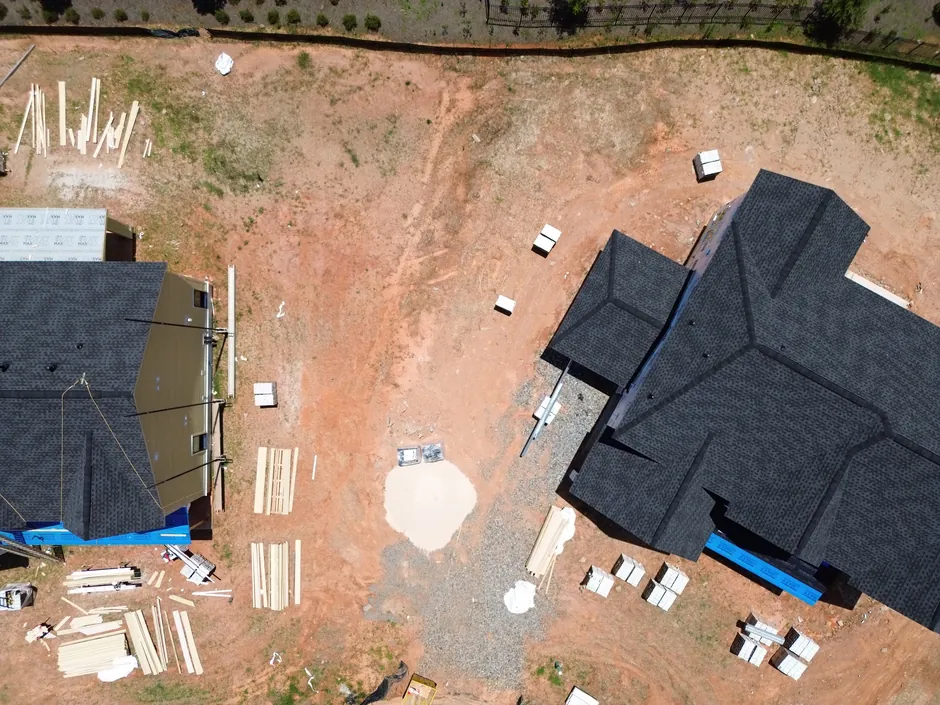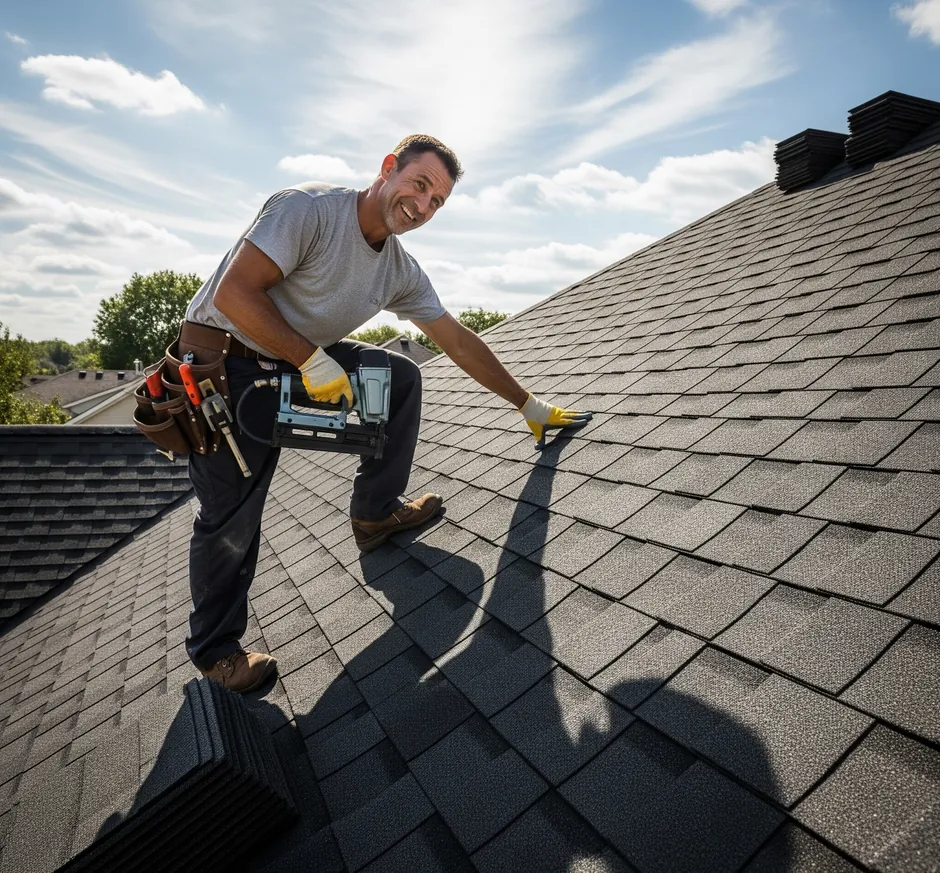
Roof Inspection Woodstock
Woodstock Roof Inspection
Woodstock’s unique blend of historic charm and rapid modern development presents distinct challenges in roof inspection. From century-old structures in the historic downtown to new developments along Highway 92, Woodstock’s diverse architectural landscape demands a nuanced approach to roof assessment. This technical guide offers property owners, managers, and inspectors detailed insights into inspection methodologies, local building codes, and specific challenges encountered in Woodstock’s evolving roofing environment.
Core Components of Woodstock Roof Inspections
A comprehensive roof inspection in Woodstock typically covers the following key areas:
-
Structural Integrity Evaluation
- Assessment of roof decking condition, particularly critical in Woodstock’s older structures
- Inspection of truss and rafter systems, with special attention to historic framing methods
- Evaluation of chimney structures, common in Woodstock’s older homes and buildings
-
Roofing Material Analysis
- Detailed examination of traditional materials like slate and wood shakes in historic districts
- Assessment of modern composite shingles prevalent in Woodstock’s newer subdivisions
- Evaluation of metal roofing systems, increasingly popular in Woodstock’s commercial areas
-
Water Intrusion Detection
- Utilization of advanced moisture mapping technology for non-invasive leak detection
- Inspection of flashing integrity, particularly around Woodstock’s numerous dormer windows
- Assessment of gutter and downspout systems, crucial in Woodstock’s heavily wooded areas
-
Energy Efficiency Assessment
- Thermal imaging to evaluate insulation effectiveness, important for both historic and modern structures
- Analysis of ventilation systems, critical in Woodstock’s hot, humid climate
- Evaluation of radiant barrier installations in newer Woodstock homes
-
Environmental Impact and Durability Check
- Inspection for moss and algae growth, common in Woodstock’s shaded areas
- Assessment of UV damage, particularly on south-facing slopes
- Evaluation of wind and hail resistance, important due to Woodstock’s occasional severe weather
Advanced Inspection Techniques for Woodstock Properties
Woodstock’s roofing professionals employ several cutting-edge techniques:
-
Drone-Assisted Aerial Inspections
- High-resolution imagery for detailed visual analysis of hard-to-reach areas
- Thermal mapping to identify hot spots and potential insulation failures
- 3D modeling of complex roof structures, particularly useful for Woodstock’s historic buildings
-
Non-Destructive Testing (NDT) Methods
- Infrared thermography for detecting hidden moisture issues
- Ultrasonic pulse echo testing for assessing material thickness and integrity
- Electric field vector mapping (EFVM) for pinpointing leaks in flat commercial roofs
-
Digital Documentation and Analysis
- Use of mobile apps for real-time data collection and reporting
- Implementation of AI algorithms for pattern recognition in inspection imagery
- Cloud-based storage and sharing of inspection reports for easy access by stakeholders
 Figure 1: Advanced roof inspection techniques utilized in Woodstock, showcasing drone technology and infrared imaging applications
Figure 1: Advanced roof inspection techniques utilized in Woodstock, showcasing drone technology and infrared imaging applications
Woodstock-Specific Inspection Protocols
Inspectors in Woodstock must adhere to local regulations and address unique regional factors:
-
Historic District Considerations
- Compliance with Woodstock Downtown Historic District guidelines for roof alterations
- Use of non-invasive inspection techniques to preserve historical integrity
- Documentation of original roofing materials and craftsmanship for preservation purposes
-
New Development Standards
- Verification of compliance with Woodstock’s updated 2024 building codes for new constructions
- Assessment of stormwater management features integrated into modern roofing systems
- Evaluation of cool roofing implementations in Woodstock’s commercial developments
-
Environmental Adaptations
- Inspection for damage from Woodstock’s mature tree canopy
- Assessment of roof ventilation adequacy to combat high humidity levels
- Evaluation of gutter systems’ capacity to handle Woodstock’s heavy rainfall events
-
Mixed-Use Development Focus
- Comprehensive evaluation of diverse roofing systems within single structures
- Assessment of rooftop amenity spaces common in Woodstock’s newer mixed-use buildings
- Inspection of green roofing elements increasingly adopted in downtown redevelopment projects
Woodstock Roof Inspection Regulations and Requirements
Understanding local regulations is crucial for property owners and inspectors in Woodstock:
-
Inspection Frequency
- Annual inspections recommended for all commercial properties
- Bi-annual inspections required for buildings in the Downtown Historic District
- Post-storm inspections mandated for public buildings and recommended for all properties
-
Certification Requirements
- Inspectors must hold a valid Georgia state license
- Additional certification in historic preservation techniques required for inspecting properties in historic districts
- Drone operators must comply with Woodstock’s UAV ordinances and FAA regulations
-
Reporting Standards
- Digital reports must be filed with Woodstock’s Building Department for all commercial inspections
- Use of standardized assessment forms required to ensure consistency across inspections
- Photographic documentation mandatory for all identified issues, with geo-tagging recommended
-
Energy Efficiency Compliance
- All inspections must include an energy performance evaluation as of 2024
- Verification of cool roofing compliance for new commercial constructions and major renovations
- Documentation of insulation R-values and ventilation adequacy in all residential inspections
-
Historic Preservation Considerations
- Inspections of historic properties must include an assessment of material authenticity and preservation status
- Recommendations for repairs or replacements must comply with Woodstock Historic Preservation Commission guidelines
- Documentation of any original roofing features for the city’s historical records
Preparing for a Roof Inspection in Woodstock
Property owners can take several steps to ensure a thorough and efficient inspection:
-
Documentation Gathering
- Compile all previous inspection reports, repair records, and original installation documentation
- For historic properties, gather any available historical records or previous preservation work documentation
- Prepare a log of any known issues or recent changes to the roof
-
Access Facilitation
- Ensure clear access to all roof areas, including any locked or restricted sections
- Trim overhanging branches that may impede inspection, especially in Woodstock’s heavily wooded areas
- Clear the area around the building to allow for proper placement of inspection equipment
-
Interior Preparation
- Provide access to attic spaces or upper floors for interior inspection components
- Remove or cover stored items in attic spaces to allow for thorough examination
- Inform occupants about the inspection to ensure cooperation and minimal disruption
-
Systems Coordination
- For commercial properties, coordinate with HVAC technicians to provide access to rooftop units
- Arrange for temporary deactivation of any solar panel systems for safe inspection
- Ensure security systems are notified to prevent false alarms during the inspection process
-
Post-Inspection Planning
- Schedule a detailed review session to discuss the inspection findings
- Prepare for potential follow-up assessments, especially if specialized testing is recommended
- Allocate resources for addressing any critical issues identified during the inspection
Preserving Woodstock’s Roofing Heritage While Embracing Modern Standards
Thorough and regular roof inspections are essential for maintaining the integrity and longevity of Woodstock’s diverse property types. By leveraging advanced technologies, adhering to local regulations, and employing specialized techniques, property owners can protect their investments and ensure the ongoing performance of their roofing systems.
Whether you own a historic gem in downtown Woodstock, manage a modern commercial complex, or oversee a new residential development, partnering with certified inspectors who understand Woodstock’s unique roofing landscape is crucial. Regular, professional inspections not only prevent costly damages but also contribute to preserving Woodstock’s architectural heritage while meeting the demands of its growing, modern community.